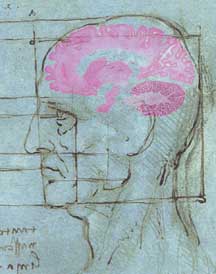|
(Page 3 of 3)
The problem is that most of the molecules that make up the
HAART drugs do not readily cross the blood–brain barrier,
or only do so in suboptimal amounts. And whatever drugs do
get into the brain do not remain there very long, as drug
efflux pumps transport them back across. Furthermore, the
potential exists that the drugs themselves may damage brain
cells if allowed access to the CNS.
Fox and his colleagues will explore a number of new possibilities
for addressing the inability to treat HIV-infected brains.
There are brain-penetrating antiretrovirals, and the effect
of these will certainly be studied, though Fox believes such
an agent may not be necessary. "If you lower viral load [in
the blood] effectively," he says, "there will be less virus
entering the brain, and less of an immune response against
it. Then you will have fewer abnormalities."
In one already concluded study, for instance, PMPA, a reverse
transcriptase inhibitor that does not cross the blood–brain
barrier, was injected in a single daily dose and shown to
reverse neural abnormalities. When the treatment stopped,
the abnormalities returned.
If brain macrophages are producing an inflammatory response
and killing nerve cells, then the remedy may be something
as simple as taking an anti-inflammatory drug, such as ibuprophen,
which diffuses across the blood–brain barrier. "That’s
certainly something we are going to look at," says Fox.
A New Effort at TSRI
In order to further research into the cause, prevention,
and treatment of HIV infection in the brain, Fox has organized
the Scripps NeuroAIDS Preclinical Studies center, funded last
year through a $10 million grant from the National Institutes
of Mental Health. The center will bring together researchers
from across TSRI to look at all aspects of HIV brain infections
and treatments as well as carrying the baton of the former
Scripps AIDS Dementia center, which directed research in the
area throughout the1990s.
The goals of the new center are twofold: to support the
existing neuroAIDS research at TSRI and to encourage other
scientists to become interested in the area. Unlike that of
its predecessor, the Scripps NeuroAIDS Preclinical Studies
operating mechanism will be to establish core centers to support
basic research into all the important molecular, cellular,
genetic, immunological, virological, neurobiological, and
chemical questions. Other cores will support the cognitive,
physiological, and behavioral responses to treatments in animal
models. Finally, a developmental core will award grants to
junior and senior faculty so that they can develop projects
related to neuroAIDS.
Center scientists will develop novel in vitro molecular
and cellular assays and new molecules to test. They will also
support studies by producing DNA chip technology and transgenic
knockout mice. They will correlate all possible therapeutics
with cognitive and behavioral markers in animal models, measuring
the effects of rampant chemokine and cytokine production.
And they will look at immune activation markers, testing whether
certain molecules interact with one another. All told, the
center will support an enormous volume of research.
Fox calls the core operating model the best one possible.
"To fully understand the diseases that affect the brain,"
he says, "one also needs to study the other systems that interact
with the brain." He expects that any research supported by
the center will branch off into independent, investigator-initiated
research grants. Fox himself directs two such independent
research grants.
"Scientists often want to try something new, but they either
can’t pay for it or can’t invest a lot of time to
learn how to do it," says Fox, "But we can do it. That’s
one of the great advantages of [a center] such as ours. Paying
a private company to do this kind of research, or trying to
do it all in a single lab, would be prohibitive."
"[Researchers] still shy away from the brain," he says.
"Hopefully, the center will make it more accessible."
The following TSRI researchers are associated with the Scripps
NeuroAIDS Preclinical Studies center, directing cores or performing
novel developmental studies funded by competitive grants from
the center: Michael Buchemier, Iain Campbell, Monica Carson,
Phil Dawson, John Elder, Howard Fox, Nick Gascoigne, Steve
Head, Steve Henriksen, John Polich, Amanda Roberts, Nora Sarvetnick,
George Siggins, Michael Taffe.
The center holds monthly meetings focussing on recent research
on neuroAIDS—both at TSRI and outside of it—and
its basic scientific underpinnings. Attendance is open to
all who wish to find out about this field or about use of
the center’s resources.
1 | 2 |
3 |

|

Outwardly healthy HIV-positive individuals
may experience subtle changes due to the virus's action on
the central nervous system. (Proportions of a Head by Leonardo
da Vinci, 1489. Brain section from the University of Wisconsin
and Michigan State Comparative Mammalian Brain Collections,
supported by the National Museum of Health and Medicine, NSF,
and NIH. http://brainmuseum.org/ .)
See also:
• The
Scripps NeuroAIDS Preclinical Studies center, including
meeting schedules and information about core centers
• Howard
Fox’s home page
|

